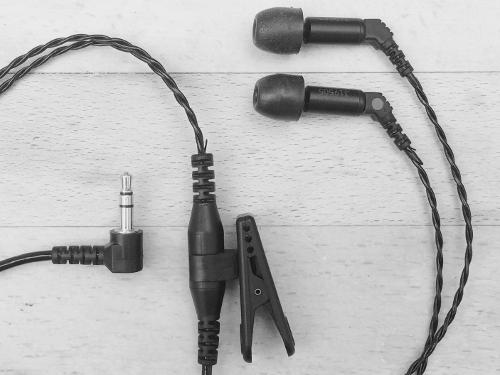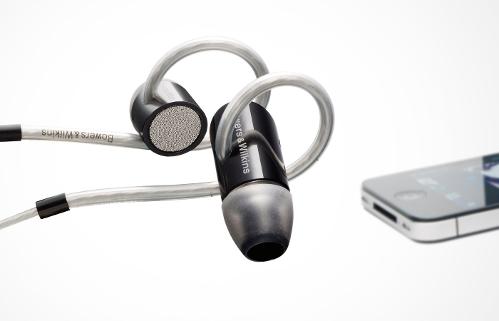Design/durability: Stellar build quality is one of the highlights of the Rockets. Pretty much every feature of it seems indestructible. The L-shaped jack seems very sturdy and has enough strain relief. The cable is made of a fancy 'military-grade' material called kevlar and seems like it could withstand rough conditions, and the same can be said for the unibody titanium earpieces. They're tiny and seem crazy well engineered. The overall finish of the product is a very good balance between premium and rugged feel. One of the downsides of the Rockets' design are microphonics: they're above average, and can be bothersome, especially when worn straight down. The other issue I should point out is vacuum seal that I will develop further down below. Other than that, they are pretty flawless.
Fit/comfort: The Rockets' overall comfort is pretty good. They're tiny, have a very adaptable form factor and don't require deep insertion... nothing to report? Not exactly: there seems to be a serious 'vacuum seal' effect with these. Most silicon tips will end up either not fitting well (too small) or fitting tight, or even too tight (resulting in vacuum), no matter what brand I use: stock Aurisonics, Sennheiser, Ultimate Ears, Bowers&Wilkins, etc. I have to constantly adjust/readjust the position of the earpiece if I want to avoid one earphone sounding more muffled/quieter than the other one, which is definitely a bummer since it can take me a lot of time to find the right fit/position. Comply foams ruined the treble, so I didn't bother any longer with them. I'll continue to search for a better tip, but so far I've got no luck. That's not an issue I got with my ER-4 for instance. Otherwise impeccable comfort.
Isolation: very good. Below the deep insertion range of Etymotic products, but above many other conventional in-ears. Good for everyday use.
Sound: Impressive. Aurisonics hit the sweet spot tuning their new toy. The sound signature of the Rockets is very close to neutral, yet it retains a very surprising smoothness where some reference IEM can start sounding a bit aggressive. Starting with the bass: it's tight, fast, and has good texture. Just the right amount of it, with impact and character. Now the mids are real the star of the Rockets (pun intended): they're very, very well defined with astonishing clarity, they are full sounding and enveloping. I actually play the saxophone and I know when the timbre of my instrument sounds right. The Rockets just get it right where many other phones fail. Vocals sound natural too, should it be female or male. When it comes to the treble, the Rockets don't disappoint. They do have a nice amount of shimmer without any aggressiveness, providing a good sense of air. It's not overdone and very refined, with excellent extension, definition and energy, miles ahead of most IEMs, with the exception of the ER-4 maybe. I find them to have the right amount of presence, again, excellent balance here, the presentation of the music is quite organic and realistic.
Soundstage is very good considering the size of the IEM, with good layering, width/depth. Instrument separation is great with clear distinction between all saxophones in a quartet (for instance), even orchestral works sound just fine with Rockets. They are very capable and suit all genres of music, and prove to be very musical despite being close to flat sounding.
Bottom line: Apart from the various fit issues, I definitely recommend the Rockets as a very versatile IEM with excellent value for money, astounding sound and stellar build quality.

Fit/comfort: The Rockets' overall comfort is pretty good. They're tiny, have a very adaptable form factor and don't require deep insertion... nothing to report? Not exactly: there seems to be a serious 'vacuum seal' effect with these. Most silicon tips will end up either not fitting well (too small) or fitting tight, or even too tight (resulting in vacuum), no matter what brand I use: stock Aurisonics, Sennheiser, Ultimate Ears, Bowers&Wilkins, etc. I have to constantly adjust/readjust the position of the earpiece if I want to avoid one earphone sounding more muffled/quieter than the other one, which is definitely a bummer since it can take me a lot of time to find the right fit/position. Comply foams ruined the treble, so I didn't bother any longer with them. I'll continue to search for a better tip, but so far I've got no luck. That's not an issue I got with my ER-4 for instance. Otherwise impeccable comfort.
Isolation: very good. Below the deep insertion range of Etymotic products, but above many other conventional in-ears. Good for everyday use.
Sound: Impressive. Aurisonics hit the sweet spot tuning their new toy. The sound signature of the Rockets is very close to neutral, yet it retains a very surprising smoothness where some reference IEM can start sounding a bit aggressive. Starting with the bass: it's tight, fast, and has good texture. Just the right amount of it, with impact and character. Now the mids are real the star of the Rockets (pun intended): they're very, very well defined with astonishing clarity, they are full sounding and enveloping. I actually play the saxophone and I know when the timbre of my instrument sounds right. The Rockets just get it right where many other phones fail. Vocals sound natural too, should it be female or male. When it comes to the treble, the Rockets don't disappoint. They do have a nice amount of shimmer without any aggressiveness, providing a good sense of air. It's not overdone and very refined, with excellent extension, definition and energy, miles ahead of most IEMs, with the exception of the ER-4 maybe. I find them to have the right amount of presence, again, excellent balance here, the presentation of the music is quite organic and realistic.
Soundstage is very good considering the size of the IEM, with good layering, width/depth. Instrument separation is great with clear distinction between all saxophones in a quartet (for instance), even orchestral works sound just fine with Rockets. They are very capable and suit all genres of music, and prove to be very musical despite being close to flat sounding.
Bottom line: Apart from the various fit issues, I definitely recommend the Rockets as a very versatile IEM with excellent value for money, astounding sound and stellar build quality.























